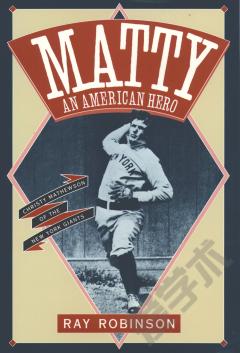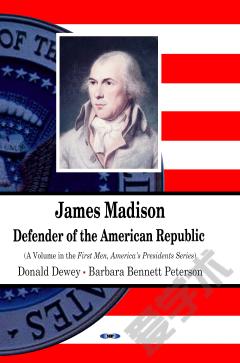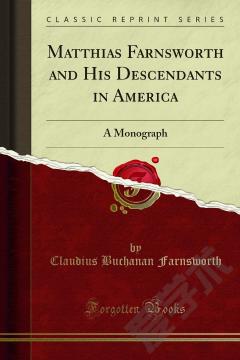Matty: An American Hero —— Christy Mathewson of the New York Giants
----- 马蒂:美国英雄:纽约巨人队的克里斯蒂·马修森
When all-time pitching great Christy Mathewson died of tuberculosis in 1925 at the age of 45, it touched off a wave of national mourning that remains without precedent for an American athlete. The World Series was underway, and the game the day after Mathewson's death took on the trappings of a state funeral: officials slowly lowered the flag to half-mast, each ballplayer wore a black armband, and fans joined together in a chorus of "Nearer My God to Thee." Newspaper editorials recalled Mathewson's glorious career with the New York Giants, but also emphasized his unstinting good sportsmanship and voluntary service in World War I. The pitcher known to one and all as "Matty" or "Big Six" was as beloved for the strength of character he brought to the national pastime, as for his stunning 373 career victories. "I do not expect to see his like again," said his best friend and former manager, John McGraw. "But I do know that the example he set and the imprint he left on the sport that he loved and honored will remain long after I am gone." In Matty, Ray Robinson tells the story of a man who became America's first authentic sports hero. Until Mathewson, Robinson reveals, Americans loved baseball, but looked down on ballplayers and other athletes as hard-drinking, skirt-chasing ne'er-do-wells. Deprived of real-life role models, millions of readers followed the serialized exploits of Frank Merriwell, a fictional hero who excelled at sports from baseball to billiards and never drank, smoke, or swore. Robinson shows how an eager public greeted Mathewson as a flesh-and-blood version of Merriwell from his first year at Bucknell University, where he shone as star pitcher, premier field-goal kicker, and class president. Lured into the big leagues before he could graduate, the tall, handsome pitcher soon won over men, women and children with his sense of fair play and his arsenal of blazing fastballs, sweeping curves, and infamously deceptive fadeaway pitches. Robinson skillfully details the highlights of Mathewson's career, including his showdowns against the great batters of his day and his encounters with the young Brooklyn, Chicago, Pittsburgh and St. Louis teams. Here are the six remarkable days in October, 1905 when Mathewson became the only pitcher ever to hurl three straight shutouts in a World Series, and the afternoon at West Point when he won $50 in a bet that he could throw 20 of his best pitches to exactly the same spot. Robinson does not underplay Mathewson'soccasional failings, but the most surprising aspect of this fascinating portrait is just how close America's first Hall of Fame pitcher came to living up to his image. Drawing on rare interviews, press clips, and long overlooked eyewitness accounts, Matty brings baseball's golden age to life--not only the great teams and the early superstars, but the long train trips between games, with cramped berths and no air conditioning; the small town ballplayers let loose amidst big city vice; and the two-bit gambling that eventually led to the infamous Black Sox Scandal of the 1919 Series (a scandal that might have escaped detection if the sportswriters in the press box with Mathewson had not been able to rely on his experienced eye for clues to how ballplayers might throw games). Offering rare insight into the making of an early twentieth century American hero, Matty is must reading for anyone who loves baseball.
{{comment.content}}








 京公网安备 11010802027623号
京公网安备 11010802027623号